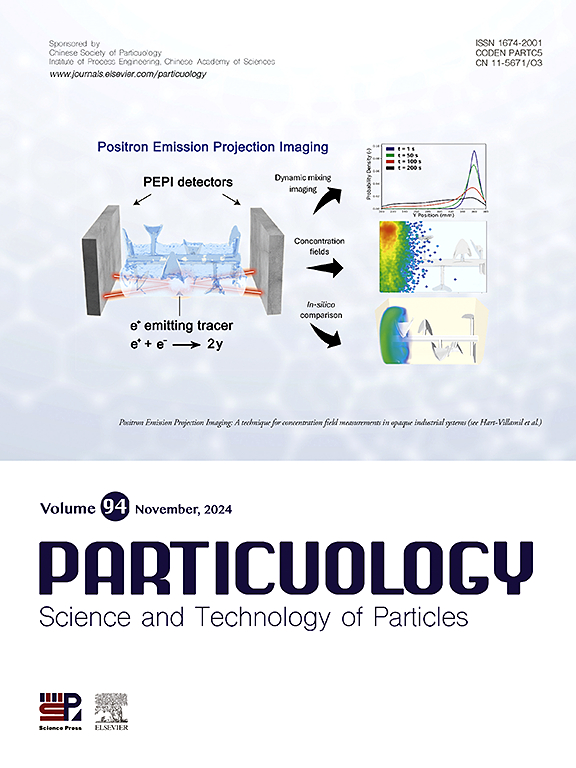A recent emission inventory of S/IVOCs with high-resolution and evaluation in the Yangtze River Delta region of China
IF 4.1
2区 材料科学
Q2 ENGINEERING, CHEMICAL
引用次数: 0
Abstract
Semi-volatile and intermediate volatility organic compounds (S/IVOCs), as the key precursors, play an important role in forming secondary organic aerosol (SOA). However, the absence of S/IVOCs in the model has led to a significant gap between simulation and measurement of SOA. Although the emission inventory of S/IVOCs is prerequisite for improving the performance of SOA simulation and evaluating the roles of S/IVOCs in SOA production, a gridded anthropogenic emission inventory of S/IVOCs in the Yangtze River Delta (YRD) region is still limited. Therefore, a 2021-based high spatiotemporal resolution S/IVOCs emission inventory over the YRD region was developed in this study. The total emission of S/IVOCs for the YRD region was estimated to be 457.58 Gg. The industrial process was the major contributor to total emissions in Shanghai City, Anhui, and Jiangsu provinces with contributions of more than 40%, while on-road mobile sources contributed the most to S/IVOCs emissions in Zhejiang Province. High S/IVOCs emissions were mainly distributed in the central cities of the YRD with developed industry and transportation, such as Wuhu and Suzhou (Jiangsu), and in the northern cities with larger cultivated areas, such as Xuzhou and Yancheng. The uncertainty range of S/IVOCs emissions established in this study was −68%∼214%. Industrial process, industrial combustion, and on-road mobile were the sources with higher uncertainties of S/IVOCs emissions. A comprehensive S/IVOCs emission inventory established in this study can be used to estimate the emissions of S/IVOCs in 41 cities over the YRD region and can be applied to air quality models for a better understanding of the formation mechanism of SOA over the YRD region.

中国长三角地区S/IVOCs高分辨率排放清查及评价
半挥发性和中间挥发性有机化合物(S/IVOCs)作为关键前体,在二次有机气溶胶(SOA)的形成中起着重要作用。然而,模型中缺少S/IVOCs导致了SOA的模拟和度量之间的巨大差距。虽然S/IVOCs排放清单是提高SOA模拟性能和评估S/IVOCs在SOA生产中的作用的先决条件,但长三角地区S/IVOCs网格化人为排放清单仍然有限。基于此,本研究建立了基于2021年的长三角洲地区高时空分辨率S/IVOCs排放清查表。长长地区S/IVOCs排放总量为457.58 Gg,其中上海、安徽和江苏三省的S/IVOCs排放主要来源于工业过程,贡献率均超过40%,而浙江省的S/IVOCs排放主要来源于道路移动源。S/IVOCs高排放主要分布在长三角工业交通发达的中部城市芜湖、苏州等,以及耕地面积较大的北部城市徐州、盐城等。本研究确定的S/IVOCs排放的不确定性范围为- 68% ~ 214%。工业过程、工业燃烧和道路车辆是S/IVOCs排放不确定性较高的来源。本研究建立的综合S/IVOCs排放清单可用于估算长三角地区41个城市的S/IVOCs排放,并可应用于空气质量模型,以更好地了解长三角地区SOA的形成机制。
本文章由计算机程序翻译,如有差异,请以英文原文为准。
求助全文
约1分钟内获得全文
求助全文
来源期刊

Particuology
工程技术-材料科学:综合
CiteScore
6.70
自引率
2.90%
发文量
1730
审稿时长
32 days
期刊介绍:
The word ‘particuology’ was coined to parallel the discipline for the science and technology of particles.
Particuology is an interdisciplinary journal that publishes frontier research articles and critical reviews on the discovery, formulation and engineering of particulate materials, processes and systems. It especially welcomes contributions utilising advanced theoretical, modelling and measurement methods to enable the discovery and creation of new particulate materials, and the manufacturing of functional particulate-based products, such as sensors.
Papers are handled by Thematic Editors who oversee contributions from specific subject fields. These fields are classified into: Particle Synthesis and Modification; Particle Characterization and Measurement; Granular Systems and Bulk Solids Technology; Fluidization and Particle-Fluid Systems; Aerosols; and Applications of Particle Technology.
Key topics concerning the creation and processing of particulates include:
-Modelling and simulation of particle formation, collective behaviour of particles and systems for particle production over a broad spectrum of length scales
-Mining of experimental data for particle synthesis and surface properties to facilitate the creation of new materials and processes
-Particle design and preparation including controlled response and sensing functionalities in formation, delivery systems and biological systems, etc.
-Experimental and computational methods for visualization and analysis of particulate system.
These topics are broadly relevant to the production of materials, pharmaceuticals and food, and to the conversion of energy resources to fuels and protection of the environment.
 求助内容:
求助内容: 应助结果提醒方式:
应助结果提醒方式:


